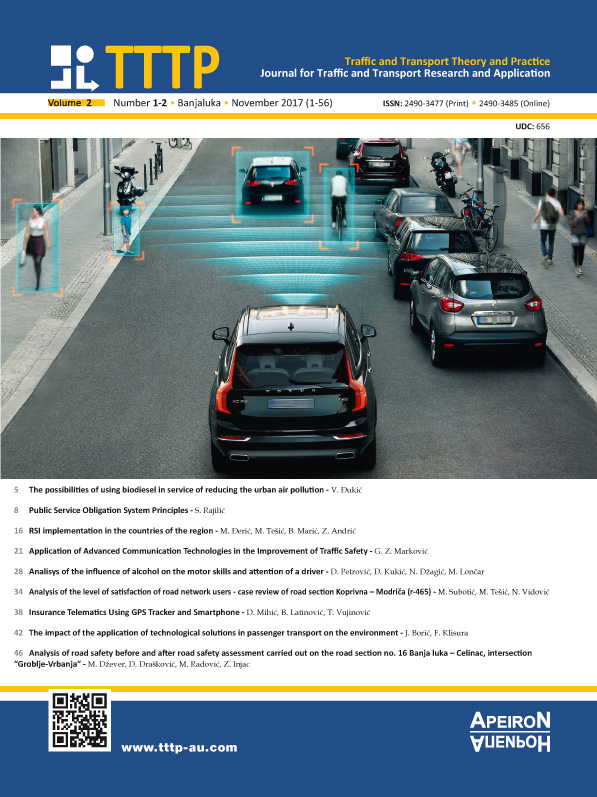Insurance Telematics Using GPS Tracker and Smartphone
DOI:
https://doi.org/10.7251/JTTTP1701038MAbstract
Insurance telematics is widely used in Europe by young and first-time car drivers[1] [1]. It relies on an insurance premium that is based not only on static measures, but also on dynamic measures. The dynamic measures are the current position of vehicle, the current speed at that position, time spent on the road, the driver’s style of driving etc. When we talk about insurance telematics, we refer to insurance schemes pay-as-you-drive (PAYD), pay-how-you-drive (PHYD) and manage-how-you-drive (MHYD). Telematics could be smartphone based insurance with technology which relies on insurance premiums that reflect the risk profile of drivers and the traditional in-car mounted devices for insurance telematics. This telematics work is experience from a recent insurance telematics validation and analyst pilot run in England on motorway around the Heathrow airport. In this telematics test, the global positioning system (GPS) and smartphone is used as receiver.
The small global positioning system (GPS) transmitter is a small tracker in-car mounted devices with SIM card with is set up for sending SMS to smartphone every ½ minutes. The smartphone is the receiver equipment which is used to collect telematics data which is ready for analysis. There are many companies around with data analytics expertise who use the latest big data analytics technology such as Hubio Dynamic Data Warehouse[2] [2]. They analyse data from a wide range of different data sources, including databases, sensors, smartphones and social media.
